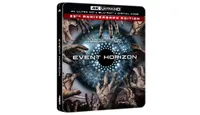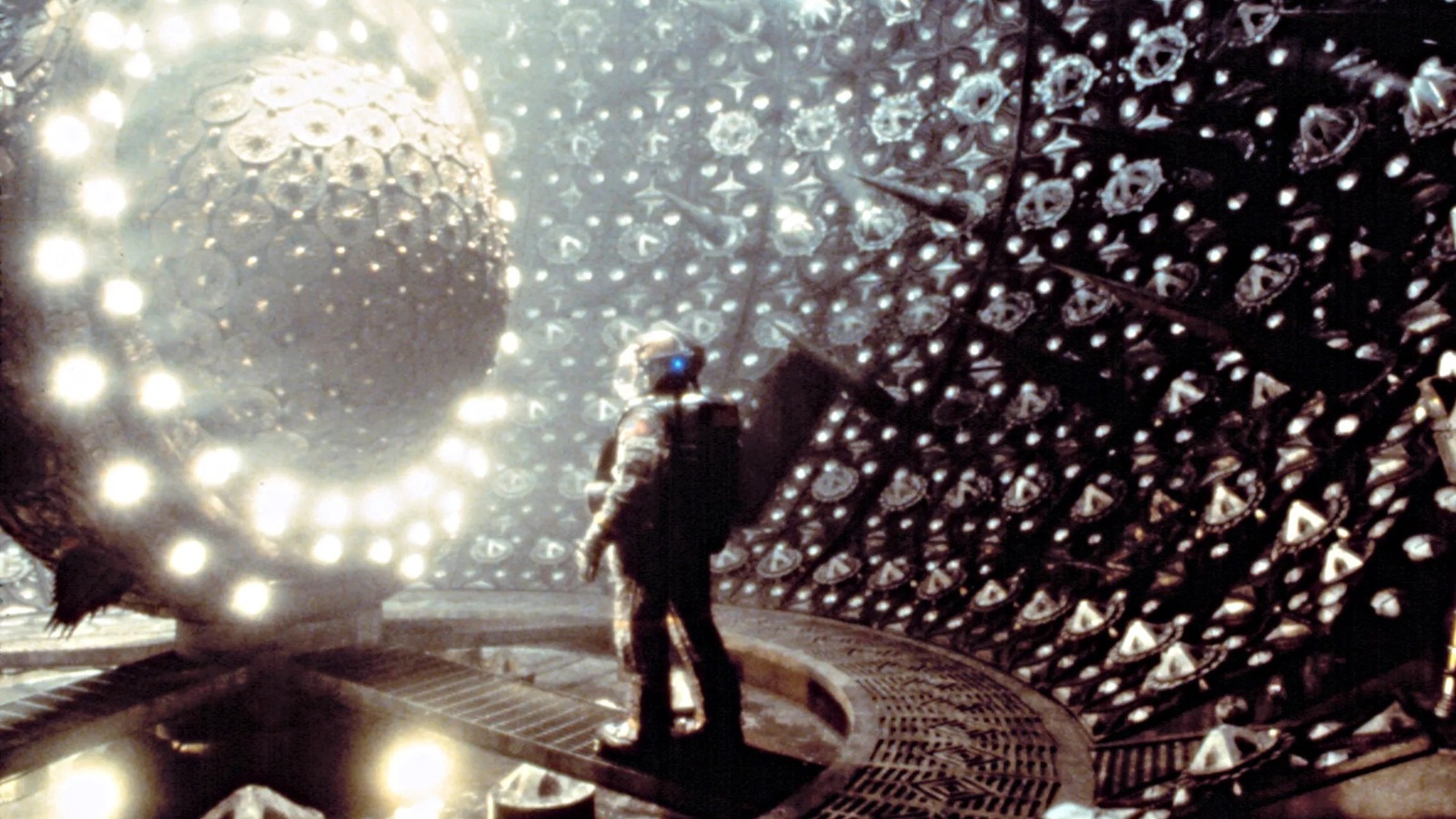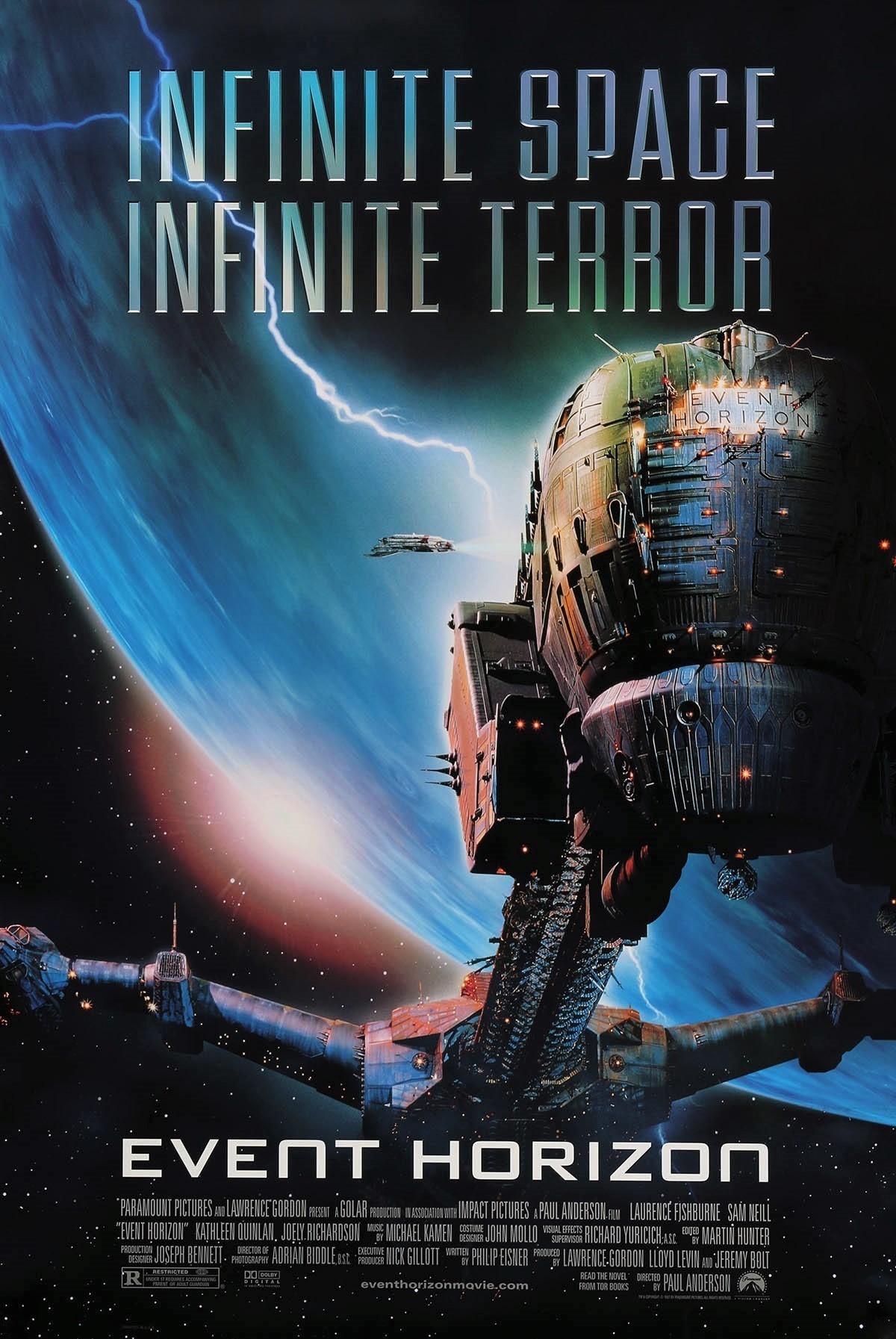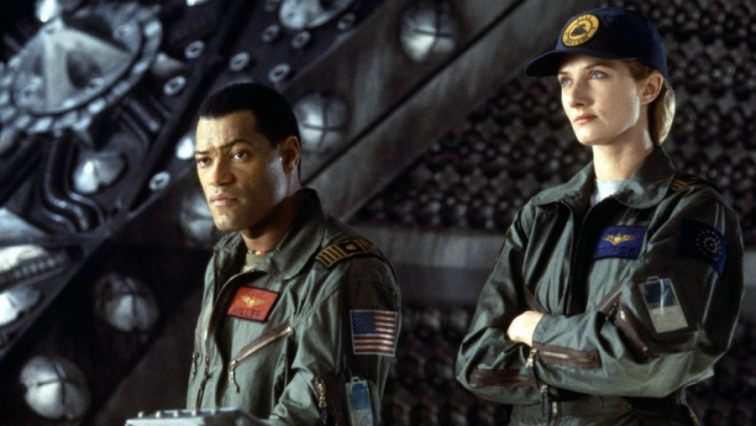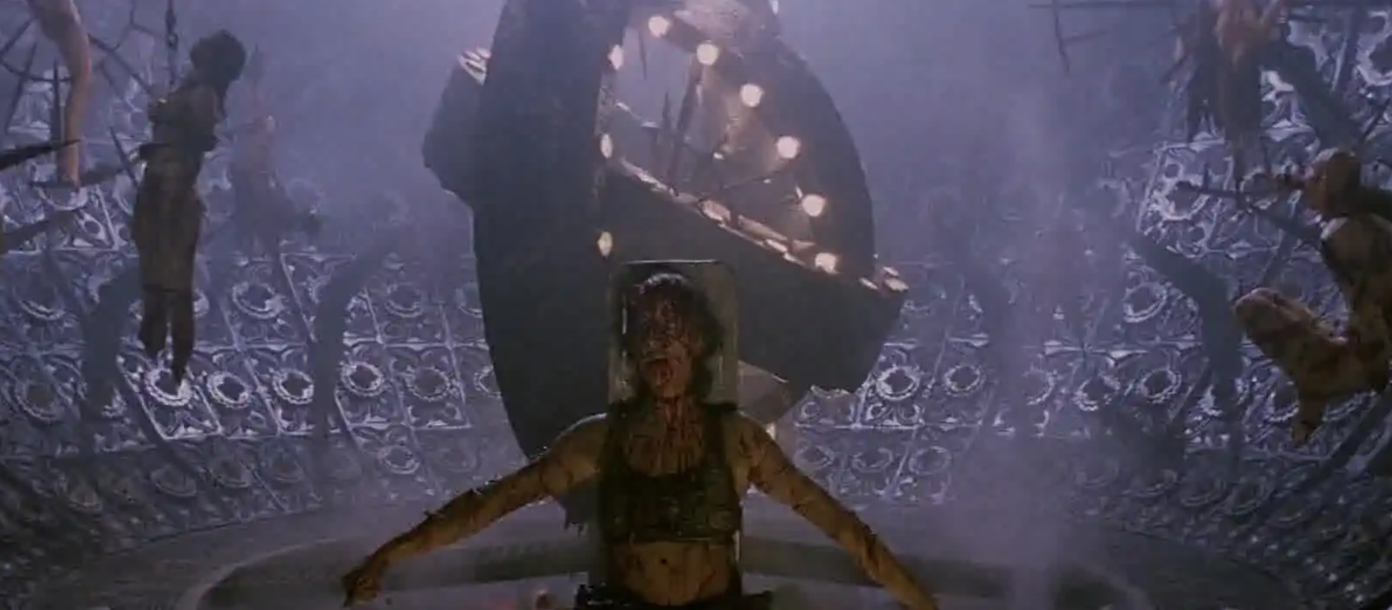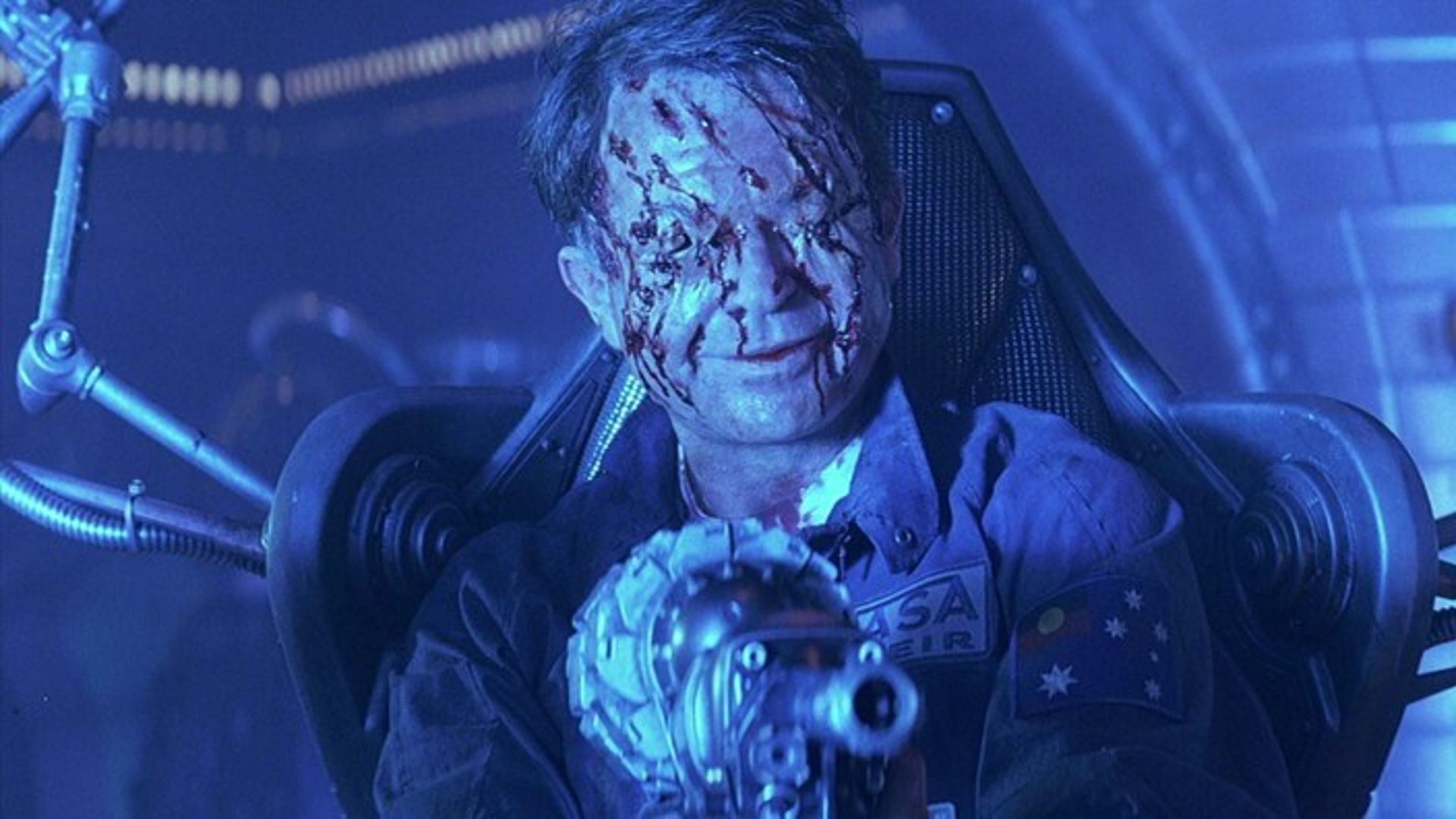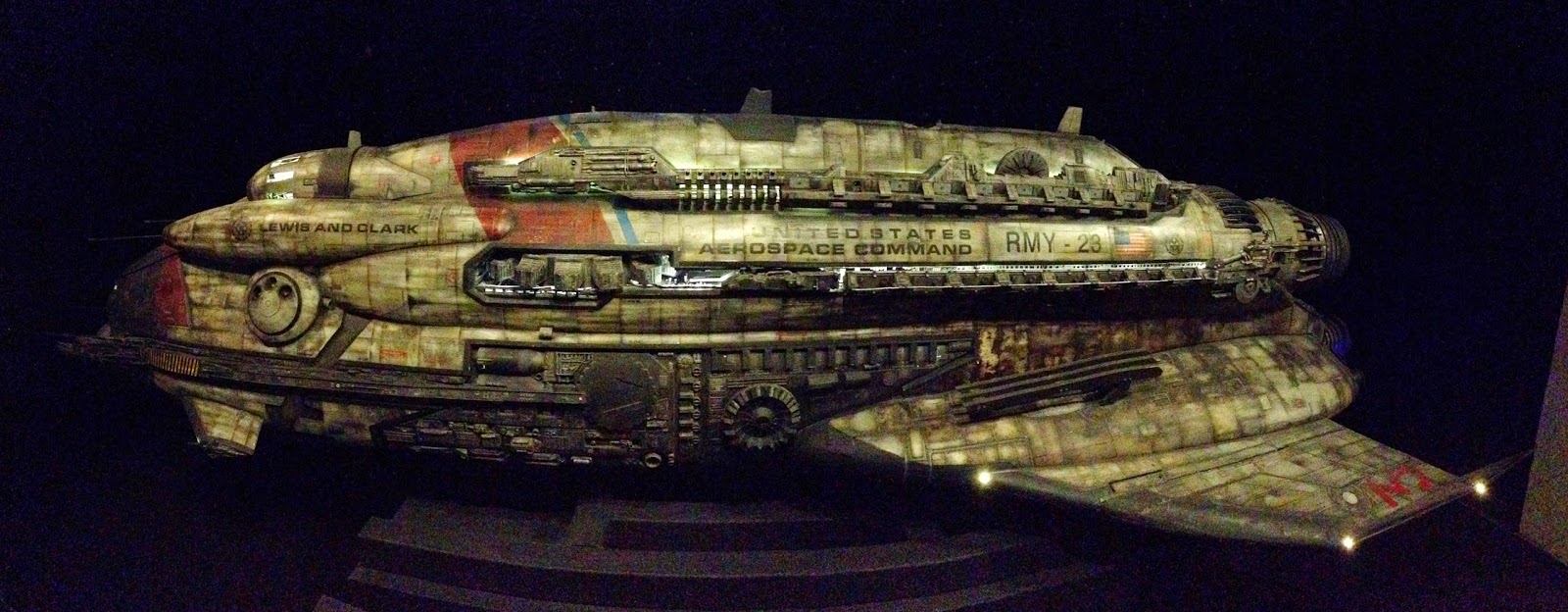'Event Horizon' at 25: Director Paul W.S. Anderson on his cult sci-fi film's stylish nightmares (exclusive)

Aging like a fine bottle of reserve Cabernet Sauvignon, "Event Horizon" was British director Paul W.S. Anderson’s follow-up Hollywood feature after the enormous success of his martial arts fantasy "Mortal Kombat" two years previous.
Now crowned with certified cult status, "Event Horizon" celebrates its 25th anniversary today and one would be hard pressed to name another sci-fi horror flick whose reputation and respect has gained more since its release on Aug. 15, 1997.
Timid critics and meek audiences weaned on "Independence Day" were expecting more of an eerie supernatural story instead of the gory “Hellraiser in Space” vibe and overly-harsh reviews doomed its initial theatrical run.
Event Horizon Blu-ray: $34.98 now $21.99 at Amazon
Celebrate the 25th anniversary of Event Horizon with this special edition of the sci-fi horror film with audio commentary from director Paul W.S. Anderson and behind-the-scenes documentaries.
Starring Sam Neill, Laurence Fishburne, Jason Isaacs, Joely Richardson, Kathleen Quinlan, Richard T. Jones, Sean Pertwee, and Jack Noseworthy, "Event Horizon" told the harrowing tale of the rescue vessel Lewis and Clark that investigates a long-lost experimental spacecraft that vanished into a black hole seven years earlier and has now reappeared in Neptune’s orbit with no signs of life aboard.
The R-rated "Event Horizon" is notorious for its impressive practical effects, intense tone, spectacular gothic sets, driving soundtrack, Christian iconography, and nightmarish imagery of the cursed spaceships’ unintended voyage straight into the demonic dimension of Hell itself.
To mark the occasion of its 25th anniversary, Paramount has released a limited-edition 4K UHD set for its milestone birthday that includes new interviews, featurettes, and lots of bonus material.
Space.com chatted with Paul W.S. Anderson about his memories of shooting "Event Horizon," what studio execs thought about the horrific “Visions of Hell” scenes, working with a stellar cast, how Notre Dame cathedral inspired the spooky spaceship, and the film's enduring popularity 25 years later.
Breaking space news, the latest updates on rocket launches, skywatching events and more!
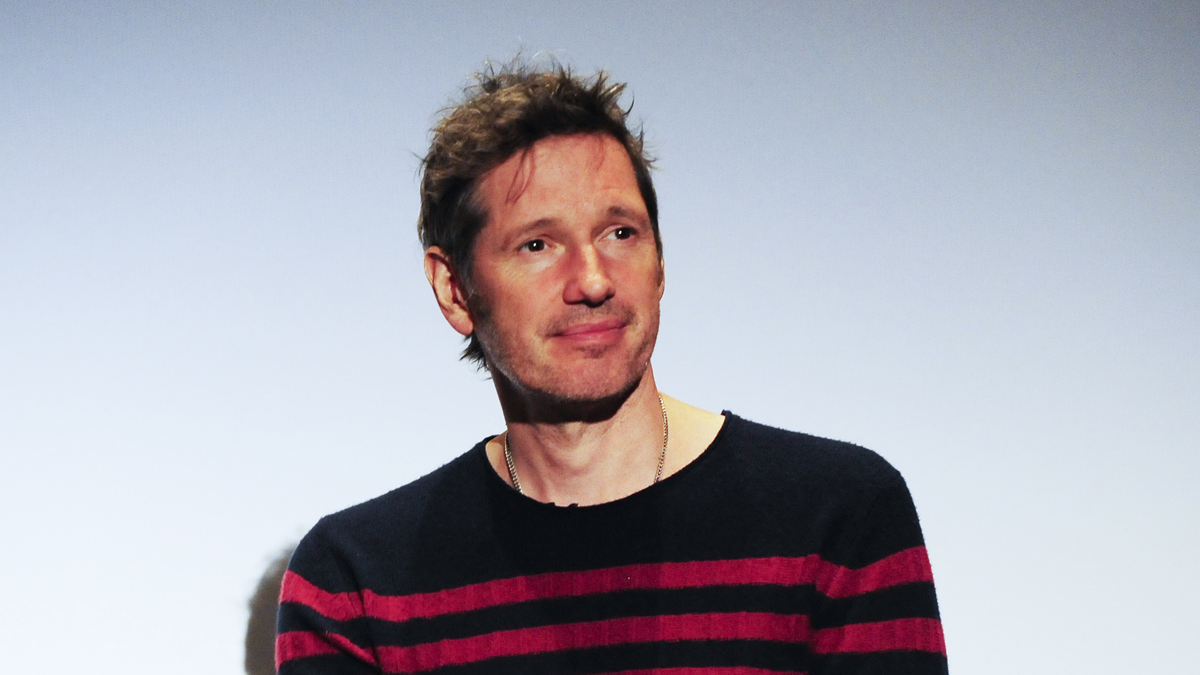
Paul W.S. Anderson is an acclaimed film director, producer and screenwriter behind the "Resident Evil" film franchise, 1998's "Soldier," 2020's "Monster Hunter" and the original "Mortal Kombat" from 1995. His sci-fi horror film "Event Horizon" was released in 1997.
Space.com: What attracted you to Philip Eisner's "Event Horizon" script when you read it, as opposed to other projects you were being offered like "X-Men?"
Paul W.S. Anderson: It was dark and I really liked that. It was a genre that I loved. It was science fiction. It was in space and it was a horror movie. So it was all of those things, and I’d just done a PG-13 action movie so I really liked the idea of doing something that was darker and more visceral. It was world creation as well. I’d partly done that with "Mortal Kombat" and I really enjoyed it. I enjoyed creating Shang Tsung's island and the other stuff we built and here was an opportunity to create the entire world because it was all set on space stations and spaceships.
Space.com: When discussing the techno-medieval style and sinister tone of "Event Horizon" with production designer Joseph Bennett, visual effects supervisor Richard Yuricich and cinematographer Adrian Biddle, what were some influences you used in creating that world?
Anderson: Early in the pre-production process we screened a lot of movies, which was great because we all got to watch Robert Wise’s "The Haunting," we watched "2001," and we watched "Alien" again. What really struck me, looking at "2001" and "Alien," was the strength of the look of those movies. They were strong and it made me realize they had such strong inception points. "2001" was all the research that they did with NASA to say, "okay, what's it really going to be like?" They did the realistic version of space. "Alien" ended up being much more advanced once we got to 2001 and we didn't have space stations that looked like that and no moon base.
With "Alien," Ridley [Scott] had H.R. Giger. It was one man's life's work distilled down into this biomechanical look that was so different to anything anyone had seen before. The look of the alien, the look of the alien spaceship was straight out of his art books. I thought, "2001" had NASA, Ridley had Giger, I've got to have something going into this. I can’t go and do a generic space movie where we just sit with a production designer and draw some corridors. We need a concept.”
Related: The Alien movies ranked worst to best
For me the concept came when I was in Paris. I was aware we were making a haunted house movie because that’s what Philip's script had always been, and I saw Notre Dame cathedral again and I walked around it. It was so impressive and so intimidating and I thought this is what we have to do, a real gothic structure. Scanning Notre Dame cathedral into the computer and then building the Event Horizon from its constituent elements.
So we would kind of break apart Notre Dame once the cathedral was in the computer. The thruster pods were made from the towers of Notre Dame turned on their side. All the intricate ironwork was based on the stained glass windows. The flared pillars you see inside the medical bay, these were all medieval architectures because they were for the load bearing weight of the stone. And even the cruciform shape of the Event Horizon itself is based on the cruciform shape of a classic cathedral. That was our inception point, was to do a gothic cathedral but rendered out of steel rather than stone.
Space.com: What were the Paramount studio executives’ reactions to your longer, more gore-filled cut of "Event Horizon" when it was screened for them?
Anderson: They were very polite but they were horrified. I was shooting the movie in London and we were sending dailies back to Los Angeles. But I think the studio were watching the main unit dailies and they weren’t paying attention to what the second unit was doing. On Saturdays, which were days off for the main unit, I was going into the studio with the second unit and shooting the "Visions of Hell" stuff. I don't think anyone from the studio had really seen it before they saw it at the first test screening. And they were making "Star Trek" so it was almost like I was besmirching the good name of "Star Trek" with all of my horrible gross stuff I had out in space.
Space.com: You assembled an incredible cast and the chemistry shows on screen. What was the mood like on set during filming in London?
Anderson: They were all lovely people. Sam Neill and Laurence Fishburne, who were much more experienced actors than I had usually dealt with, were very generous with their time, and I felt they really helped me and I learned a lot as a director directing actors with them. And they were excited to make the movie, partly because they were doing something different than what they’d normally be offered. If you think about Sam Neill, the man who saved the children from the dinosaurs in "Jurassic Park," he was right up there with Tom Hanks as the man you’d most trust with your children. So the idea of him playing the scientist who goes insane and rips out his own eyes, well, Sam wasn’t being asked to do that a lot. And Fishburne, he’d been in these movies like "King of New York" working with some pretty dark directors, so for him to play the straight here, it was kind of fresh for him as well.
Then Joely Richardson, who was this English rose who’d done so many great period movies and arthouse movies, the idea of being in a space movie where she was dashed in blood and wrapped in barbed wire, it just wasn't something she was being offered very often. So they were all excited to embrace the challenge, I think. I will say the one thing I heard from a lot of the actors, and I remember Joely mentioned it to me, they found the sets quite oppressive.
There was almost an element of cabin fever that developed, because they were coming to work in the Event Horizon set day after day. They never went outside. They never got fresh air in their lungs or sunlight on their skin. Actually, I think it worked for the movie because it had a sense of claustrophobia. And we’d done our job with the sets. If the actors found them unsettling as a workplace, I felt like the audience would definitely find it unsettling when they saw the movie.
Space.com: The fusion of composer Michael Kamen’s operatic score and the electronic pulses of Orbital created a unique soundtrack for "Event Horizon." How did that pairing come about?
Anderson: I’m very very pleased with it. This was the third time I’d worked with Orbital, because their music was in my first movie, "Shopping," and then in "Mortal Kombat." I’d sourced tracks from them in the past so this was the first time I actually got to work with them as composers.
For a while I toyed with the idea of just having them do the entire soundtrack, but then I thought fusing them with a more traditional composer was the way to go. And it really produced something very special. I felt like they elevated Kamen’s works and he kept them on track as far as what was required for a movie. Michael’s scores, sometimes they’re amazing and sometimes they felt a little generic, and this was certainly anything but generic. I think they really pushed him.
Space.com: Did you keep any mementos from the set of "Event Horizon?"
Anderson: I did keep the Lewis and Clark, the model of it. I used to live in a house in the Venice Canals in California and I had the Lewis and Clark on my wall for like ten years. Then I moved and I kept it in a box for a while and I think it might still be in storage somewhere. So I definitely had the Lewis and Clark on my wall for a long time and that was such a great memento.
Space.com: Paramount just released a deluxe 4K UHD remastered edition of "Event Horizon" for its 25th anniversary. Will this continue the film’s legacy and have you seen the new transfer?
Anderson: Well, I saw the original movie and that’s what the 4K is always chasing, the look of the original film. I’m also talking about how "Event Horizon" has slowly over time built an audience. Originally when it was released on home video it was on VHS, and of course that was nowhere near the look of the actual theatrical movie. Then there was DVD, and that was the start of the real cult of "Event Horizon."
At that point you could watch it at home and it wasn’t as good as in the theater, but it was a hell of a lot better than VHS. Now with 4K it’s getting to the point where you can watch the movie with remastered sound and it can be really great at home and give you that theatrical experience.
If you're looking for more amazing sci-fi movies, check out our guide to upcoming science fiction movies for the year. You can also see our best space horror games guide to see if you can hear yourself scream in space.
Event Horizon Blu-ray: $34.98 now $21.99 at Amazon
Celebrate the 25th anniversary of Event Horizon with this special edition of the sci-fi horror film with audio commentary from director Paul W.S. Anderson and behind-the-scenes documentaries.
Follow us on Twitter @Spacedotcom and on Facebook.

Jeff Spry is an award-winning screenwriter and veteran freelance journalist covering TV, movies, video games, books, and comics. His work has appeared at SYFY Wire, Inverse, Collider, Bleeding Cool and elsewhere. Jeff lives in beautiful Bend, Oregon amid the ponderosa pines, classic muscle cars, a crypt of collector horror comics, and two loyal English Setters.
